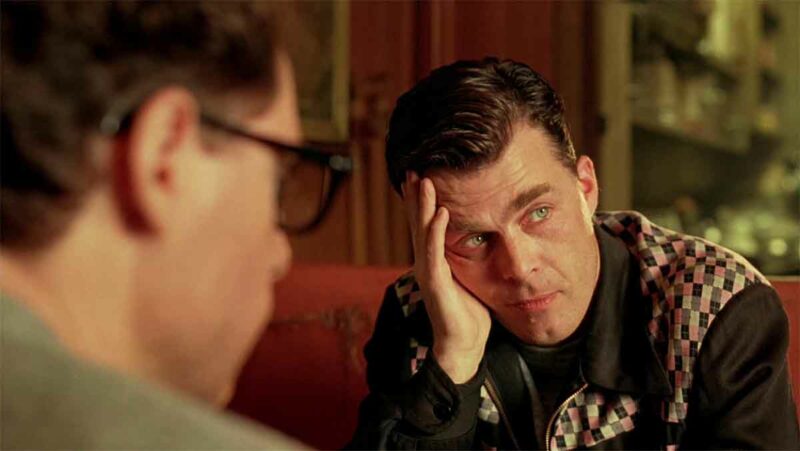Democracy, Equality, and Diversity are Killing White People
Historical changes are like throwing a stone in a pond: the initial splash is gone quickly, but waves radiate out from the point of impact for a long time, eventually affecting the entire pond. The changes that we made in the 1960s in the USA waited until the 1980s to really kick in.
In particular, this was when the generation that came of age in the 1960s started taking over management and leadership roles. If you were born in 1943 onward, you became an adult during the Kennedy years and hit the mythical age of 21 (when responsibility is assumed to come visit) during the Johnson years.
These same people then hit their late-thirties by the 1980s and by the end of the decade had assumed most of the important roles as the previous generation, born after WW1 but before WW2, hit their sixties and retired. The radical kids of the 1960s took over during the 1980s and were in full force by the Clinton era.
These were the people who grew up with Civil Rights struggles in the 1950s, protesting and free love in the 1960s, and had mellowed slightly in the 1970s into Carter-style liberalism that resulted in permanent economic paralysis but could not be corrected without a Reagan-era backlash.
In other words, the Baby Boomers were our first diversity generation. Unlike previous Americans, they had a distinctively ideological interpretation of equality, something almost never mentioned except by Lincoln Republicans previously.
Coming out of the WW2 years, they were ruled by narrative, or an explanation of the world in moralistic terms where there is such a radical, militarized need that any dissent is intolerable. This produces the war on reality that we see daily:
Narrative is now how western élites imagine the world. Whether it is the pandemic emergency, the climate or Ukraine ‘emergencies’ – all are re-defined as ‘wars’. All are ‘wars’ that are to be fought with a unitary imposed narrative of ‘winning’, against which all contrarian opinion is forbidden.
The obvious flaw to this hubris is that it requires you to be at war with reality. At first, the public are confused, but as the lies proliferate, and lie is layered upon lie, the narrative separates further and further from touched reality, even as mists of dishonesty continue to swathe themselves loosely around it. Public scepticism sets in. Narratives about the ‘why’ of inflation; whether the economy be healthy or not; or why we must go to war with Russia, begin to fray.
The weakness to this new ‘liberal’ authoritarianism is that its key narrative myths can get busted. One just has; slowly, people begin to speak reality.
When ideology breaks down, something that happens once it is applied and the inevitable flaws emerge, shattering the idea of Utopia-versus-Evil, it becomes authoritarian and aims for narrative control because it must suppress noticing of reality in order to stay in power.
On top of this, ideology itself is anti-reality. If we have to correct nature, meaning go against its principles instead of work with them, we are opposed to reality and surmising that we have a (morally) better alternative, although it cannot survive in nature without our constant effort.
In other words, a war or crusade. To have an ideology is to seek to remake the world in the human image and to deny nature. Even more than nature the physical thing, the patterns of nature, its principles, and its laws must be suppressed and destroyed.
Only this explains the manic rush of humanity into self-destruction during the democracy years. Democracy makes people hopeless because the herd always wins; equality makes people atomized and trashes social order; diversity destroys social trust and turns society into a battleground.
It turns out that we can see the slow impact of democracy, equality, and diversity in their final form with deaths of despair hitting America at about the time the Boomers started taking over and Civil Rights became the number one goal of the Narrative:
The US had lower mortality rates than peer countries during World War II and its aftermath. During the 1960’s and 1970’s, the US had mortality rates similar to other wealthy nations, but the number of Missing Americans began to increase year by year starting in the 1980’s, reaching 622,534 annual excess US deaths by 2019. Deaths then spiked to 1,009,467 in 2020 and 1,090,103 in 2021 during the pandemic. From 1980 to 2021, there were a total of 13.1 million Missing Americans.
The researchers emphasize that this mortality crisis is a multiracial phenomenon and is not specific to minoritized groups. Black and Native Americans are overrepresented in these measures, with mortality rates in early adulthood (ages 15-44) that were five and eight times higher than the average of other wealthy nations. The team also says that the history of structural racism in the US, including policies such as slavery and redlining, has contributed to racial and ethnic disparities in wealth and in access to education, housing, and healthcare that drive leading causes of worse mortality rates, particularly at young ages.
Still, two-thirds of the Missing Americans are White, a result of the larger population of White Americans, their older age distribution, and death rates that are significantly higher than other wealthy nations.
These insane ideas are killing us because they make society unstable and this turns people to fatalism. That is fine with those who like such ideas because their goal was always to destroy whatever existed naturally and to remake it into their own image.
It turns out that this image is as neurotic, resentful, and dishonest as they are.
Tags: baby boomers, deaths of despair, democracy, diversity, equality










